El monastery of Santa María La Real en Najera It is one of the most interesting monuments that can be visited in a tourism trip through La Rioja.
However, despite its historical and monumental importance, it is perhaps less known than other nearby places such as the cathedral of Santo Domingo de la Calzada and monasteries of Suso and Yuso en San Millan de la Cogolla.
Najera It is a stage in the Camino de Santiago in his passage through The Rioja, so any pilgrim or traveler who follows it will end up passing through this small town and should not miss the opportunity to visit this monastery included in the list of the World Heritage for the Unesco as an integral part of the routes to Santiago.
All the information in detail
Curiosities history monastery Santa María de Nájera
Santa María La Real is the memory of Kingdom of Nájera-Pamplona, which lasted a century and a half (923-1076) and was the predecessor of the Kingdom of Navarra, but also cradle of the kingdoms of Castile and Aragon.
In this monastery there is the Royal pantheon of the dynasty Jimena, monarchs of this kingdom, and therefore it is a place of strong symbolism.
Within the process commonly called The reconquest, the king of Pamplona Sancho Garces I took over a good part of middle and upper La Rioja, including NajeraIn the year 923.
When he died a year later and Pamplona was destroyed by Muslim armies, his son Garcia Sanchez moved the court to Najera.
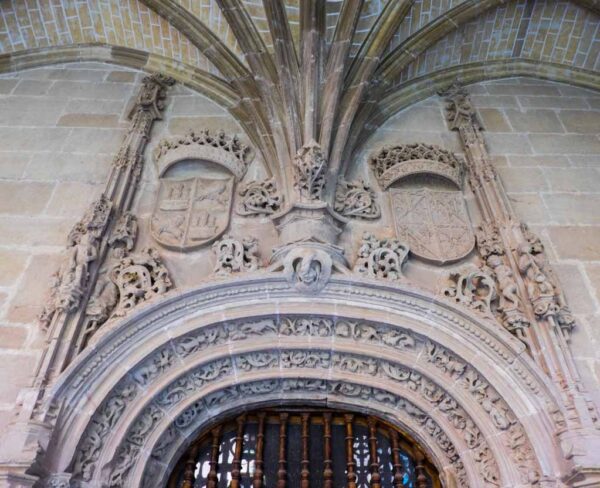
These kings initiated the development of Najera and, in fact, they diverted the primitive itinerary of the the Camino de Santiago to pass it off as their capital.
El monastery of Santa María La Real It was ordered to be built by García Sánchez III, commonly known as García from Nájera, as an episcopal seat as well as a royal pantheon.
Here was founded the Order of the Jug (also called from the terrace), the oldest military order known, and in a council held in this monastery it was decided to replace the Visigothic rite with the Roman one in the liturgy.
The monastery therefore has great historical importance, but also, as a monument, it is very attractive to visit.
The guides who accompany the groups on the visits know countless details and curiosities about this group, and it is one of those places where it is worth joining a group if possible.

Legend has it that during a hunt in the area, Don García from Nájera He released his falcon to chase a partridge.
Both animals disappeared in the thicket and when he found them, they were peacefully in a cave next to an image of The Virgin, a bell and a bouquet of lilies.
All this led to creating a royal foundation which was consecrated in 1052.
What to see when visiting the Santa María la Real de Nájera monastery
Few traces remain of this time, such as Cave, carving of Saint Mary and some graves.
What we see today is a church and a monastery which began to be built in 1432 and whose works lasted almost two centuries.
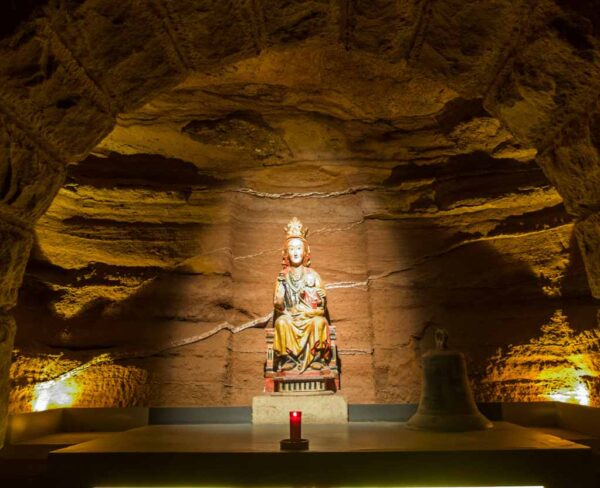
To all this we must add later modifications.
The complex generally shows a very austere image from the outside.
The best view is from the Navarra square, from where we see the outside of the great church.
The cylindrical buttresses that surround the head generate a feeling of strength that seems to conceal its spectacular interior.
ORGANIZE your TRIP
- Don't forget your TRAVEL INSURANCE with a 5% discount
- Book the HOTEL for your trip
- RENT a CAR for your trip
- The best TOURS and EXCURSIONS in Spanish
- NO-LINE TICKETS for museums and monuments
- Best FREE TOURS around the world
- Book your TRANSFER from the airport
- eSIM card with INTERNET at the best price
The visit to the monastery begins with the cloister to then move on to iglesia. Then you will have to leave to go up to the choir.
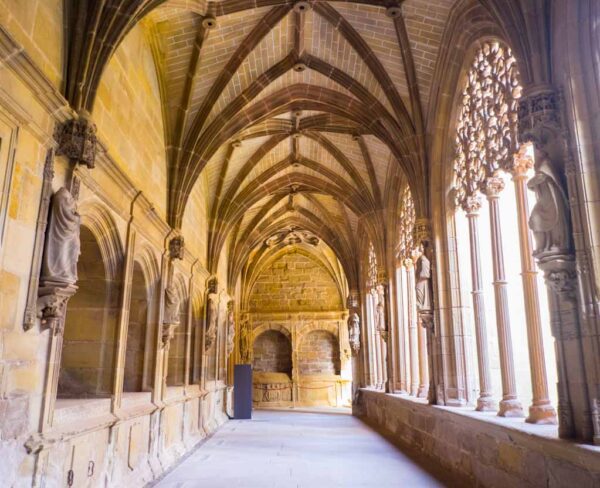
Cloister of the monastery of Santa María de Nájera
Access to the cloister is through the Carlos I Gate, that is of flamboyant gothic style, and on which appears a large shield with double-headed eagle.
Before going through the door, we will see the beginning of the staircase that leads to the upper floor of the cloister and allows access to the choir.
Looking up we will see that the roof is formed by a spectacular dome.
However, it is a trompe l'oeil and the dome is not as high as it seems but a few meters, but the effect is impressive.
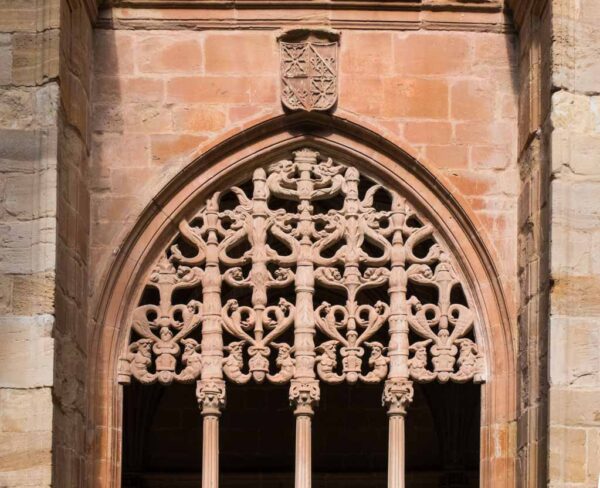
We then pass to cloister, completed in the 16th century, which is known as the Cloister of the Knights.
This is because many nobles and wealthy people, especially of Riojan, Basque and Navarrese origin, wanted to be buried in this place to be close to the royal pantheon.
The four galleries are covered by vaults late gothic, but what draws the most attention are the pointed arches that keep some intricate Plateresque tracery and fine columns.
It is a true lace in stone, each one different from the others, showing an assortment of geometric shapes, plants, animals and angels.
At some times of the day, the sun casts the shadow of the tracery on the gallery walls and creates a wonderful effect.
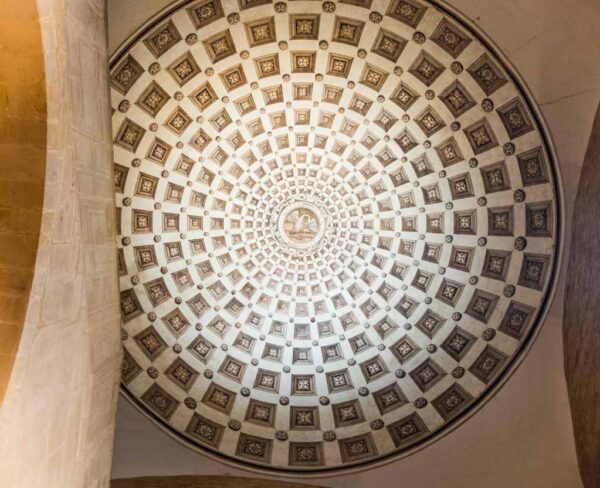
In the galleries there are numerous statues attached to the pillars but most are headless.
It is said that they were the target of gunfire during the times when the cloister served as a barracks during the War of independence.
Chapel of Doña Mencía López de Haro
If upon entering the cloister we have turned to the right, in the first corner we will see the chapel of Mrs. Mencía López de Harowhich was queen of portugal, where his tomb is located along with other tombs of relatives.
Continuing the route, near the next corner we will see the mausoleum of Don Diego López de Haro and his wife Mrs. Toddto. Both tombs are highly decorated.
Church of Santa María la Real de Nájera
We came in the church, built in the first third of the 15th century in elate gothic style and of dimensions comparable to those of many cathedrals of the time.

Royal Pantheon of Santa María la Real de Nájera
To our left we will see the great altarpiece but it would be better to go to the other end of the temple in search of the Royal pantheon.
A curiosity about what we see is that it is a renaissance pantheon and, therefore, much later than the kings buried here.
In the center are the figures of don garcia y Mrs. Estefania, founders of the monastery.
It must be realized that the ribs of the vault of this pantheon rest directly on the rock of the mountain.
Don't forget your Travel Insurance
Are you organizing your trip or getaway? Don't leave without take out your travel insurance before, and here we explain why. If you hire it with us, you have a 5% discount
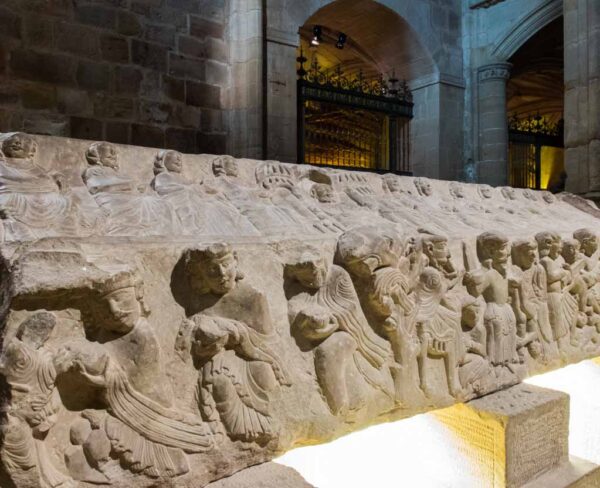
Here we see the entrance to Cave where legend says that the image of the Virgin in the year 1044 and, therefore, this is the place where it all began.
The image we see now is from the 13th century.
Pantheon of the Infants in Santa María la Real de Nájera
Following the route we will arrive at Pantheon of Infants, from the same period as the real and dedicated to secondary members of the royal family.
Among all these tombs, the one of Blanca Garcés from Pamplonadaughter of King García Ramírez of Pamplona, who married Sancho III of Castile.
Here we are before a monument that reflects the strengthening of the ties between Castilla and Navarra, but in the decoration we see painful scenes of the death of a young woman who was barely 18 years old and who died from complications after giving birth to her son.
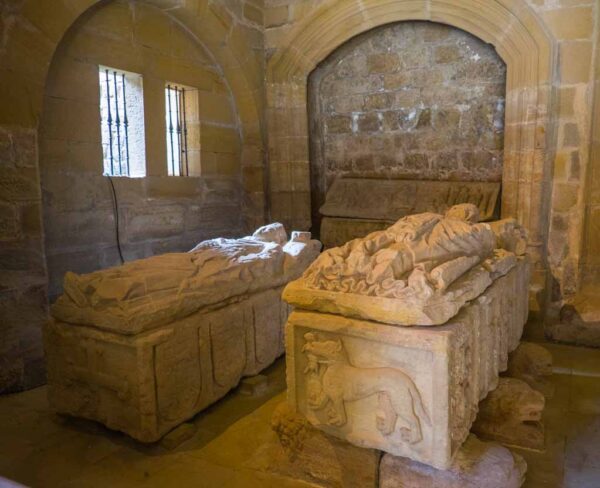
This tomb is a masterpiece of Romanesque funerary art and great altarpiece behind the main altar is another wonder.
Here are represented the three elements that the king found next to the Virgin in the cave.
Returning to the cloister, we can access the garden through the Gate of the Tree of Good and Evil, with one of the best traceries in the monastery complex.
In the cloister you should also not miss the doors, some of which are truly monumental, such as those that give access to the church and the sacristy.
Leaving the cloister through the entrance door, we went up the monumental staircase to the upper floor and we can access the choir.
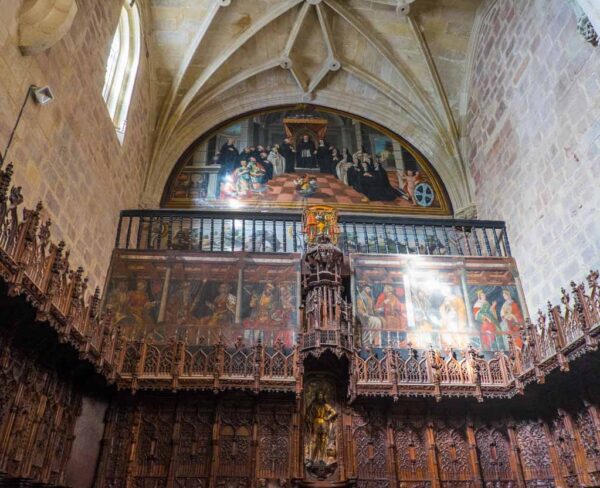
The chorus It is a wonder of flowery gothic art from the late fifteenth century.
The decoration mixes religious and secular motifs, including scenes of daily life, different professions and, perhaps for the first time, faces of people with typically Amerindian or African features.
Visit schedules for Santa María la Real de Nájera
The Visiting hours of the monastery of Santa María la Real de Nájera, in La Rioja, are, in summer, from Tuesday to Saturday, from 10 a.m. to 13,30:16 p.m. and from 19 to 10 p.m., and on Sundays and holidays, from 13,30 a.m. to 16:18 p.m. and from XNUMX to XNUMX p.m.
In July, August and September, the monastery can also be visited on Mondays.
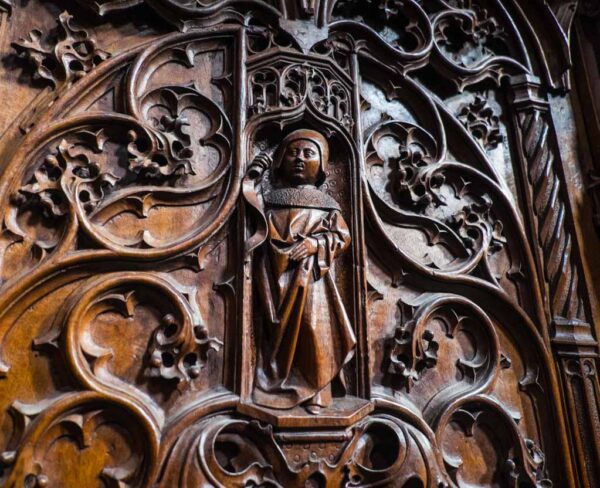
In winter, the same hours are maintained in the mornings, and in the afternoons, the monastery closes at 17,30:XNUMX p.m., being closed to visitors on Sunday afternoons in January, February and until mid-March.
Book your hotel, 15% discount, free cancellation
When planning your trip, we advise you to, well in advance, Book your hotel now on booking.com where you can find discounts from 15% and you will have a possible cancellation for free
Ticket prices for Santa María la Real de Nájera
The ticket prices to visit Santa María la Real de Nájera They are free visits for adults, 4 euros, and children from 10 to 16 years old, 2 euros.


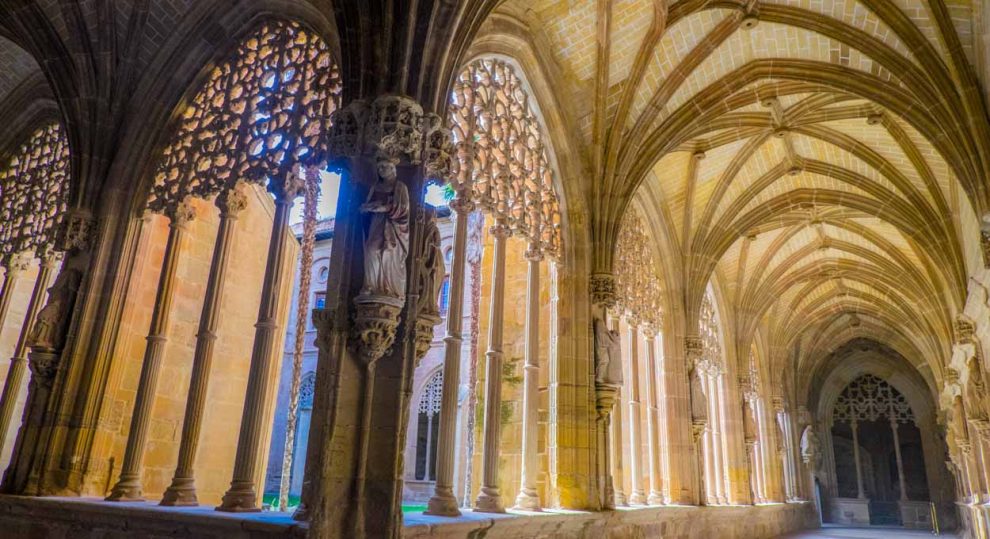

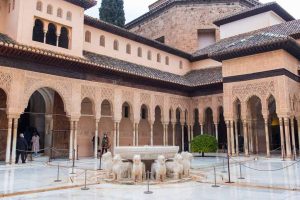
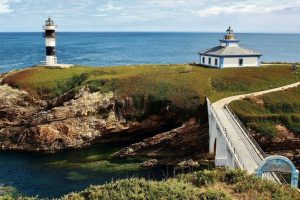











Comment